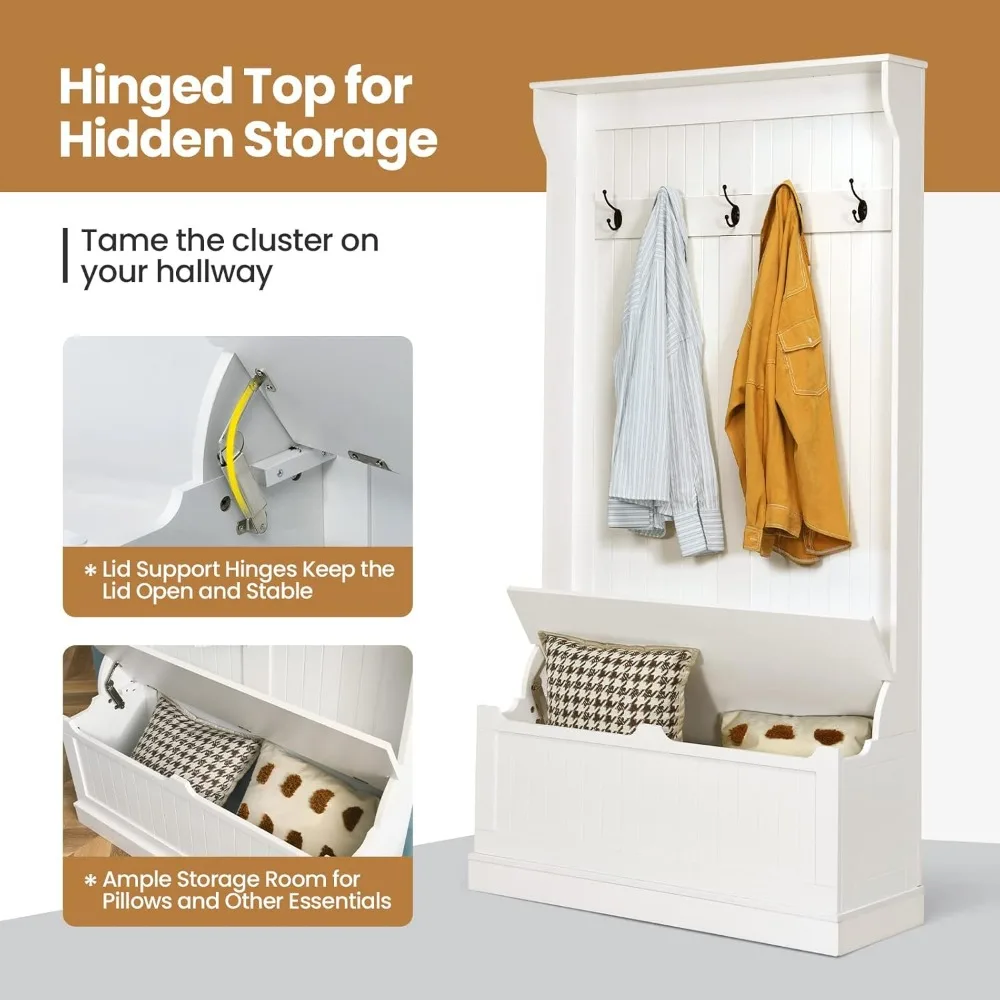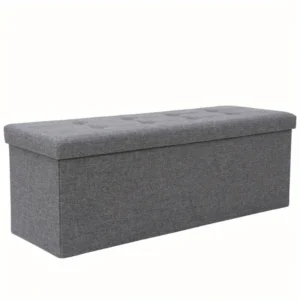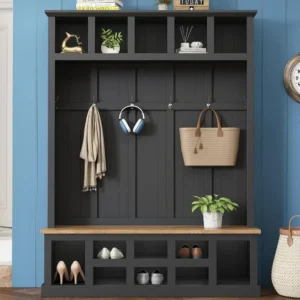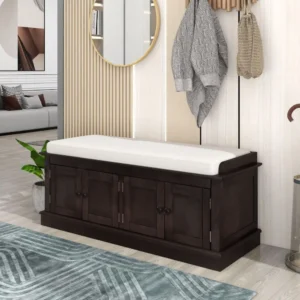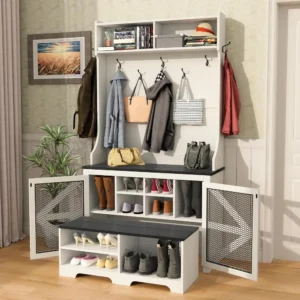Understanding the Small Mudroom Challenge
A small mudroom can be many things – a dedicated tiny room by your entrance, a sliver of hallway space, or even just a corner near your door. Regardless of size, these transition spaces between the outdoors and your home’s interior serve a vital purpose. When properly organized, even the smallest mudroom can transform your daily routine and home functionality.
Well-organized mudrooms provide numerous benefits:
- Reduced morning stress when rushing out the door
- Prevention of dirt, debris, and seasonal mess from spreading into your home
- Efficient storage for everyday essentials like keys, bags, and shoes
- Creation of designated spots for each family member’s belongings
Even in the most limited spaces, a functional mudroom needs to accommodate wet raincoats, muddy boots, pet leashes, school bags, and the countless items we carry between our homes and the outside world. Without proper organization, these small areas quickly become overwhelmed, creating frustration and chaos.
The principles of transforming entryway spaces with benches can dramatically improve how your small mudroom functions. By implementing thoughtful space-saving mudroom solutions, even the most compact areas can be reimagined as efficient, stress-reducing spaces.
Assessing Your Space and Needs Before Starting
Before rushing to purchase storage solutions, take time to thoroughly evaluate both your space and your specific needs. This crucial planning stage ensures that your small mudroom organization will truly work for your family’s unique situation.
Start by creating a simple assessment checklist:
Measure your available space – Note exact dimensions including:
– Width and length of usable floor area
– Ceiling height (for potential vertical storage)
– Door swing clearance requirements
– Any architectural features (windows, electrical outlets, vents)Create an inventory of items needing storage:
– Daily essentials (keys, bags, phones)
– Footwear (everyday shoes vs. seasonal boots)
– Outerwear (coats, jackets, rain gear)
– Accessories (hats, gloves, scarves)
– Sports/hobby equipment
– Pet suppliesAnalyze traffic patterns:
– How many people use the space simultaneously?
– Are there peak usage times creating bottlenecks?
– Do you need specialized zones for different activities?Identify priority functions for your specific mudroom:
– Primary entry/exit point vs. secondary entrance
– Needs for seating while putting on shoes
– Requirements for privacy or visibility from other areas
Understanding which small benches work best for entryways can help you determine if seating should be incorporated into your plan, and if so, what dimensions would maximize both comfort and storage capacity.
Vertical Storage Solutions: Making the Most of Wall Space
When floor space is limited, your walls become your most valuable asset. Vertical storage solutions transform otherwise unused space into functional storage that keeps belongings organized and accessible.
The advantages of vertical storage in small mudrooms include:
- Maximizing storage capacity without consuming precious floor space
- Creating visual organization that makes items easy to locate
- Allowing for customization based on your family’s height and needs
- Preventing floor clutter that creates tripping hazards
Effective vertical storage options include:
- Wall-mounted hook systems (single hooks, rows, or decorative boards)
- Floating shelves at strategic heights
- Pegboard systems with adjustable components
- Slat wall or track systems with interchangeable elements
- Magnetic strips for metal items
When planning vertical storage, consider accessibility for different family members. Children need lower hooks they can reach independently, while adults may prefer higher placement. Staggered configurations allow for maximum use of wall space while accommodating everyone’s needs.
Many entryway hall trees combine vertical storage with seating options, creating all-in-one solutions perfect for small mudrooms.
Wall-Mounted Hook Systems for Coats and Bags
Hooks are perhaps the most versatile and essential elements of small mudroom organization. They provide instant storage without requiring much space and can be configured in numerous ways to suit your specific needs.
Different types of hooks work best for different purposes:
- Heavy-duty hooks – For bulky winter coats and backpacks
- Decorative hooks – When aesthetics matter as much as function
- Multi-tiered hooks – To maximize vertical space with stacked storage
- Individual hooks – For personalized storage zones
- Hidden or folding hooks – For a cleaner look when not in use
Strategic hook placement makes all the difference in functionality. Install adults’ hooks at approximately 60-65 inches from the floor, with children’s hooks at 30-40 inches. Consider staggering hooks horizontally as well to prevent bulky items from overlapping.
For maximum organization, pair hooks with other elements – place shelving above for hats and accessories or mount baskets below for gloves and scarves. Many bench systems with hooks and storage create comprehensive solutions that address multiple organization needs simultaneously.
Elevated Shelving Strategies for Small Spaces
Shelving provides essential storage for items that don’t hang well on hooks and creates visual boundaries that help define your small mudroom space. With thoughtful placement, shelves can transform even the most awkward corners and narrow spaces.
Effective shelf options for small mudrooms include:
- Floating shelves – Create a clean, contemporary look without visible brackets
- Bracketed shelves – Offer sturdy support for heavier items
- Corner shelves – Utilize often-wasted corner spaces
- Built-in shelving – Custom-fitted to your exact dimensions
To prevent visual clutter on open shelving, use attractive baskets or bins to corral smaller items. Consider shelf dividers to keep stacked items like folded scarves or hats from toppling over.
Arrange items on shelves based on frequency of use, with everyday essentials at eye level and seasonal or less-used items higher up. Leave some open space rather than cramming shelves full – this not only looks better but makes accessing items easier.
Multi-Functional Furniture for Limited Square Footage
When every inch counts, furniture that serves multiple purposes becomes invaluable. The key to selecting multi-functional pieces for small mudrooms lies in finding the perfect balance between size, storage capacity, and functionality.
When evaluating furniture options, consider these space-efficient principles:
- Choose pieces that combine seating with storage whenever possible
- Look for slim profiles designed specifically for narrow spaces
- Select pieces with closed storage to hide visual clutter
- Consider wall-mounted or floating furniture that preserves floor space
- Measure carefully to ensure proper fit without crowding
Storage benches represent the cornerstone of efficient mudroom design, providing both a place to sit while putting on shoes and concealed storage for various items. Understanding what makes a mudroom bench effective can help you select the right option for your space.
Compact Bench Solutions with Hidden Storage
A well-designed storage bench serves as command central in a small mudroom, offering a place to sit while managing the transition between outdoors and indoors while concealing clutter.
The most space-efficient bench styles include:
- Flip-top storage benches – Provide large hidden compartments for bulky items
- Open cubby benches – Create individual storage zones with visual access
- Drawer benches – Offer more organized storage with pull-out access
- Narrow profile benches – Designed specifically for tight spaces (as slim as 12-15 inches deep)
- Corner benches – Utilize otherwise wasted corner space
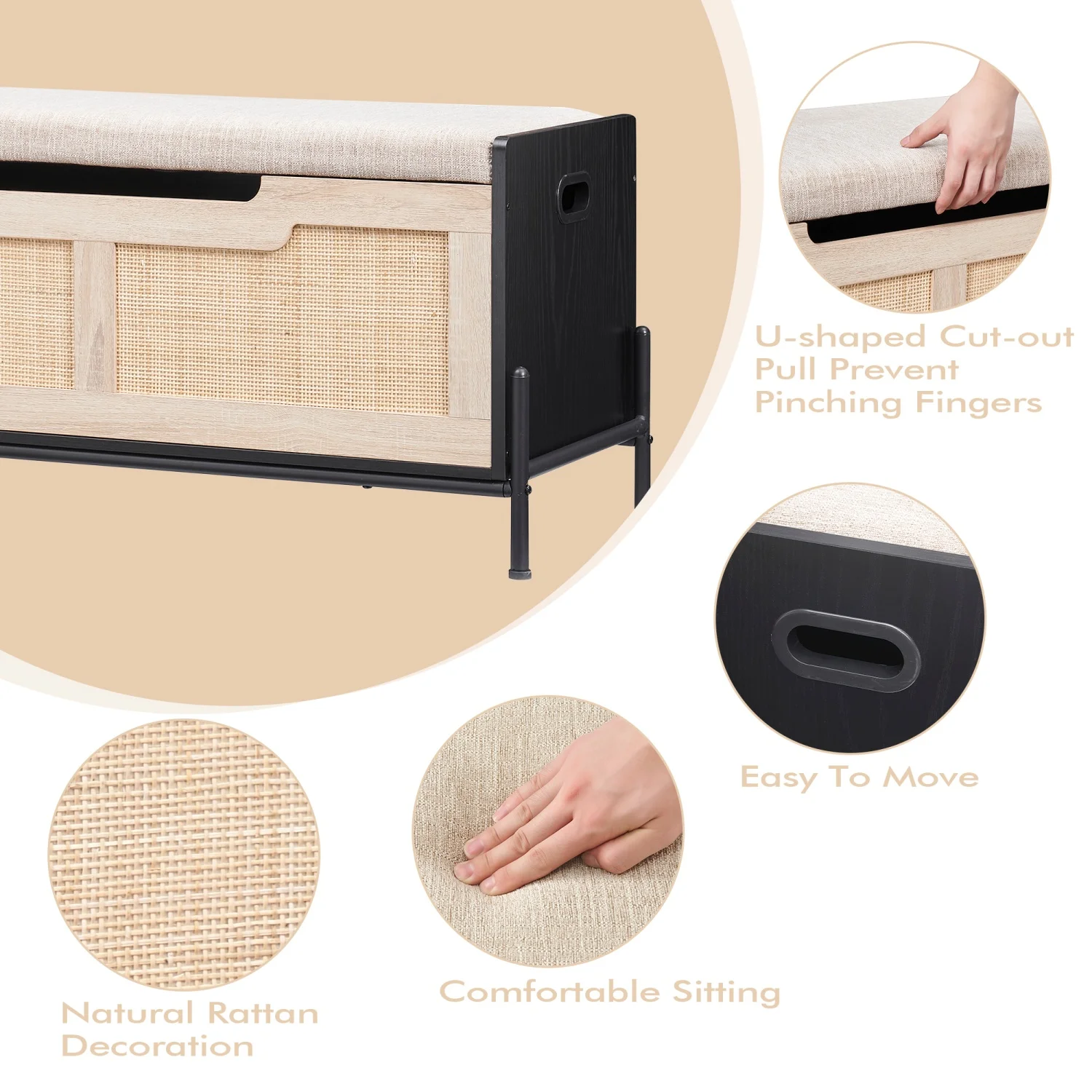
For the most durable performance in high-traffic areas, look for benches constructed from solid wood, metal, or high-quality engineered materials. Cushioned tops add comfort but should feature easy-to-clean, stain-resistant fabrics.
Many mudroom benches with shoe storage combine seating with specialized footwear organization, addressing two critical needs with one piece of furniture.
Slimline Cabinets and Lockers for Concealed Storage
While open storage has its place, closed cabinets and lockers help maintain visual calm in small spaces by hiding clutter behind doors. This approach is particularly valuable in mudrooms that open directly into living areas where aesthetics matter.
Space-efficient cabinet options include:
- Narrow depth cabinets (12-15 inches deep instead of standard 24 inches)
- Tall, slender cabinets that maximize vertical storage
- Individual lockers for personal storage zones
- Over-bench cabinets that utilize wall space above seating
- Repurposed kitchen or bathroom cabinets adapted for mudroom use
The interior organization of cabinets matters as much as their external dimensions. Add hooks inside doors, adjustable shelves, or pull-out bins to maximize functionality. Consider transparent or mesh door panels that allow visibility while still containing items.
Our selection of mudroom benches with cabinets offers integrated solutions that combine seating with closed storage for the ultimate space efficiency.
Conquering Shoe Clutter in Minimal Space
Footwear often creates the biggest organizational challenge in small mudrooms. Shoes and boots take up substantial floor space, track in dirt, and quickly create a cluttered appearance when not properly contained.
Entryway Bench with Shelf Storage, Shoe Bench for Entryway, Shoe Storage Bench
$194.08 Select options This product has multiple variants. The options may be chosen on the product pageBench with Hooks and Storage, Entryway Hall Tree, Mudroom Bench with Cubbies, Mudroom Bench with Shoe Storage
$818.38 Select options This product has multiple variants. The options may be chosen on the product pageEntryway Coat Rack Bench, Entryway Hall Tree, Farmhouse Mudroom Bench, Mudroom Bench with Shoe Storage
$805.09 Select options This product has multiple variants. The options may be chosen on the product pageEntryway Bench with Cushion, Mudroom Bench with Cabinets, Shoe Bench for Entryway, Shoe Bench with Cushion
$991.71 Select options This product has multiple variants. The options may be chosen on the product pageBench with Hooks and Storage, Entryway Coat Rack Bench, Entryway Hall Tree, Mudroom Bench with Shoe Storage, Mudroom Coat Rack Bench
$793.73 Select options This product has multiple variants. The options may be chosen on the product pageCoat Rack Shoe Bench, Entryway Coat Rack Bench, Entryway Hall Tree, Wood Entryway Bench
$479.82 Select options This product has multiple variants. The options may be chosen on the product page
The most space-efficient shoe storage solutions include:
- Tiered shoe racks that utilize vertical space
- Under-bench shoe shelves that maximize otherwise wasted space
- Wall-mounted shoe organizers that keep footwear off the floor
- Shoe cabinets with tilting compartments that conceal items while keeping them accessible
- Boot trays for containing moisture and dirt from wet footwear
For families with limited space, implementing a seasonal rotation system prevents overcrowding. Store off-season shoes elsewhere, keeping only current-season footwear in the mudroom.
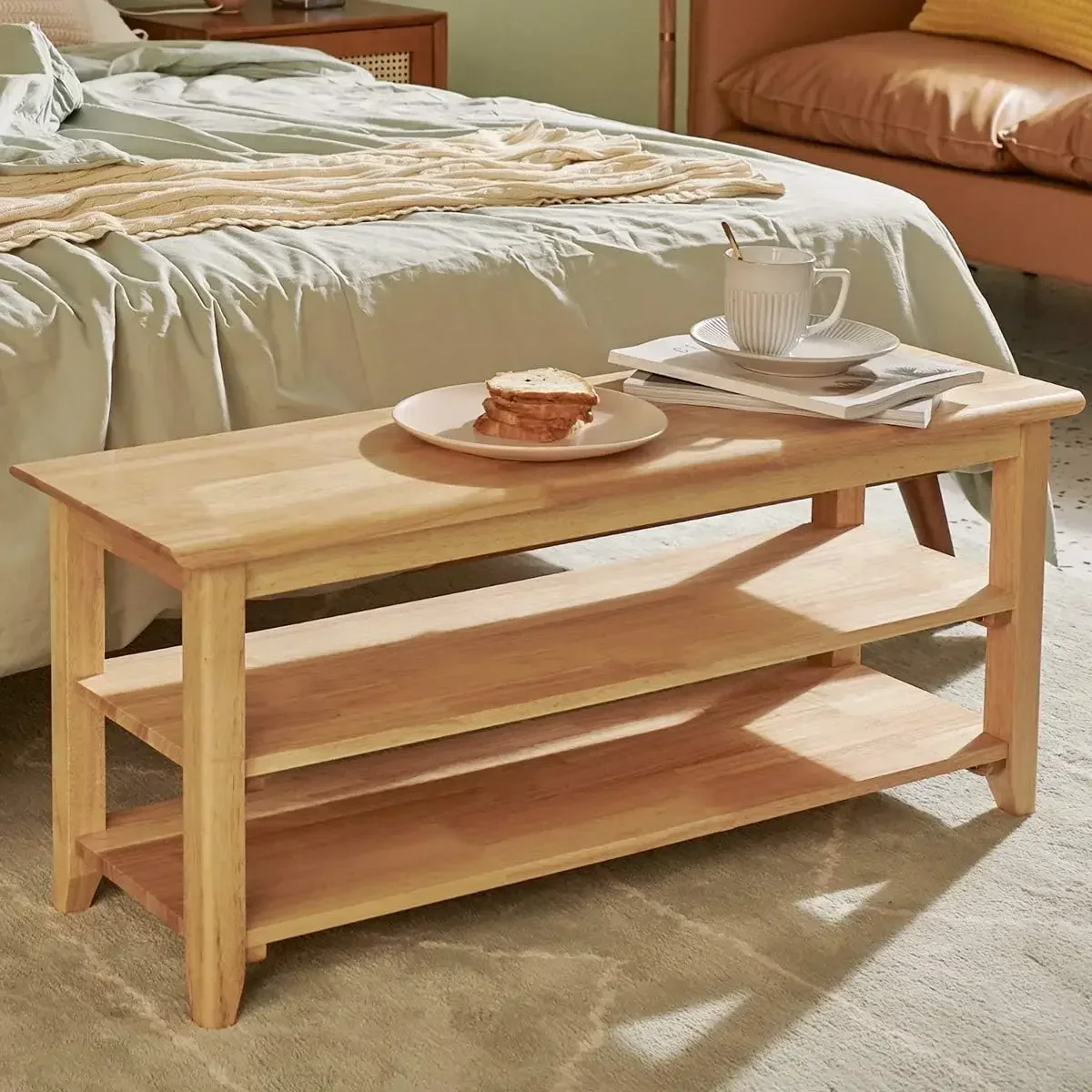
Specialized shoe storage benches combine seating with dedicated shoe compartments, offering an elegant solution to footwear organization in tight spaces.
Creative Container Solutions for Small Items
Small items often create the biggest organizational headaches. Keys, gloves, scarves, sunglasses, and pet supplies can quickly overwhelm a small mudroom without proper containment systems.
Effective container options include:
- Wall-mounted baskets for mail and papers
- Labeled bins for each family member’s small accessories
- Divided organizers for keys, sunglasses, and electronics
- Stackable containers for seasonal items
- Hanging pocket organizers for gloves and small accessories
When selecting containers, consider both function and aesthetics. Choose options that complement your décor while providing enough structure to maintain organization. Clear containers make contents visible, while opaque ones conceal visual clutter.
Implement consistent labeling systems that work for all family members, including picture labels for young children. Create “incoming” and “outgoing” containers for items that need attention, like library books or permission slips.
Learning to organize a small entryway bench with proper containers ensures that even the most compact spaces can accommodate your family’s everyday essentials.
Maximizing Door and Behind-Door Spaces
Doors represent valuable but often overlooked real estate in small mudrooms. Both the doors themselves and the wall space behind them offer significant storage potential.
Creative door utilization strategies include:
- Over-the-door organizers with multiple pockets for small items
- Behind-door hook racks for robes, towels, or bags
- Door-mounted shoe organizers repurposed for hats, gloves, and accessories
- Shallow shelving installed behind doors for items accessed less frequently
- Magnetic boards attached to metal doors for keys and notes
When utilizing doors for storage, be mindful of weight limitations. Distribute heavy items evenly and use appropriate mounting hardware. For rental properties where drilling isn’t permitted, look for tension-rod solutions or over-the-door organizers that don’t require permanent installation.
Consider door style as well – pocket doors or sliding barn doors can save valuable space compared to traditional swing doors, though they provide less storage surface.
Creating Functional Zones in Tight Spaces
Even the smallest mudroom benefits from thoughtful zoning – designating specific areas for different activities and items. This approach prevents chaos and makes the space more intuitive to use.
Essential mudroom zones to consider include:
- Drop zone – A designated spot for mail, keys, phones, and items needed when heading out
- Hanging zone – Dedicated area for coats, bags, and backpacks
- Seating zone – Space to sit while managing footwear
- Shoe zone – Contained area for footwear management
- Individual zones – Personalized spaces for each family member
Create visual separation between zones using color coding, labels, or different storage types. Even without physical barriers, these visual cues help maintain organization.
For families, consider assigning each person their own “landing spot” with hooks, bins, or cubbies at appropriate heights. This ownership encourages responsibility and makes locating personal items easier.
Implementing space-saving entryway ideas helps create functional zones without requiring significant square footage.
DIY and Budget-Friendly Organization Hacks
Creating an organized small mudroom doesn’t require expensive custom solutions. Many effective organization systems can be created or adapted on a limited budget.
Try these cost-effective approaches:
- Repurposed kitchen cabinets installed at entry height
- Wooden crates mounted on walls for shoe storage
- Thrift store furniture painted and modified with added hooks
- Wire baskets attached to walls for gloves and scarves
- Pallet wood transformed into custom hook boards
- Tension rods installed in tight spaces for hanging items
- Repurposed dish drainers as vertical boot organizers
Simple weekend projects like creating a basic hook board require minimal tools and materials. Use decorative hooks screwed into painted plywood or reclaimed wood for an attractive and functional wall organizer.
For renters, look for command hooks, tension rod systems, and freestanding furniture that provide organization without permanent installation. Stackable crates or bins can create customizable cubbies without damaging walls.
Weather-Ready Organization for All Seasons
Small mudrooms must adapt to changing seasons, accommodating everything from heavy winter gear to summer beach essentials. Strategic planning ensures your limited space remains functional year-round.
Consider these seasonal adaptation strategies:
- Create a designated “wet zone” with water-resistant flooring and a boot tray
- Install hooks at varying heights to accommodate both bulky winter coats and lightweight jackets
- Implement an accessible “seasonal rotation” system, storing off-season items elsewhere
- Use waterproof bins for wet gloves, hats, and swimwear
- Include a small drying rack that can be folded away when not needed
During wet seasons, place absorbent mats at entryways to capture moisture and protect flooring. Include a dedicated umbrella stand or hooks with drip trays underneath.
For families in snowy climates, create a dedicated boot drying station using a slotted bench or rack positioned away from other gear. This prevents moisture damage while keeping wet items contained.
Designing for Durability and Cleaning Ease
Small mudrooms experience intense traffic and exposure to the elements, making durability and easy maintenance essential considerations in your organization plan.
Select materials that stand up to daily wear:
- Flooring – Choose porcelain tile, luxury vinyl, or sealed concrete that resists moisture and cleans easily
- Wall surfaces – Opt for semi-gloss paint, beadboard, or washable wallpaper that withstands scuffs
- Storage elements – Select metal, solid wood, or high-quality composites rather than particleboard
- Fabrics – Use indoor/outdoor materials, leather, or vinyl for cushions and textiles
- Hardware – Install heavy-duty hooks and brackets that won’t bend or break under weight
Incorporate cleaning-friendly design elements like raised storage that allows for easy floor cleaning underneath. Avoid intricate details that trap dust and dirt in favor of smooth, wipeable surfaces.
Establish a quick daily reset routine – emptying boot trays, wiping down surfaces, and returning items to designated spots – to maintain organization and extend the life of your mudroom components.
Visually Expanding Your Small Mudroom Space
Strategic design choices can make even the tiniest mudroom feel more spacious and welcoming. Visual tricks create the perception of additional space while maintaining full functionality.
Try these space-enhancing techniques:
- Use light, reflective colors on walls and cabinetry to brighten the space
- Install adequate lighting, including task lighting in darker corners
- Incorporate a mirror to reflect light and create the illusion of depth
- Maintain visual consistency with adjacent rooms for flow
- Keep some open space rather than filling every inch with storage
- Choose furniture with legs rather than pieces that sit directly on the floor
- Use transparent or open storage elements rather than solid, heavy pieces
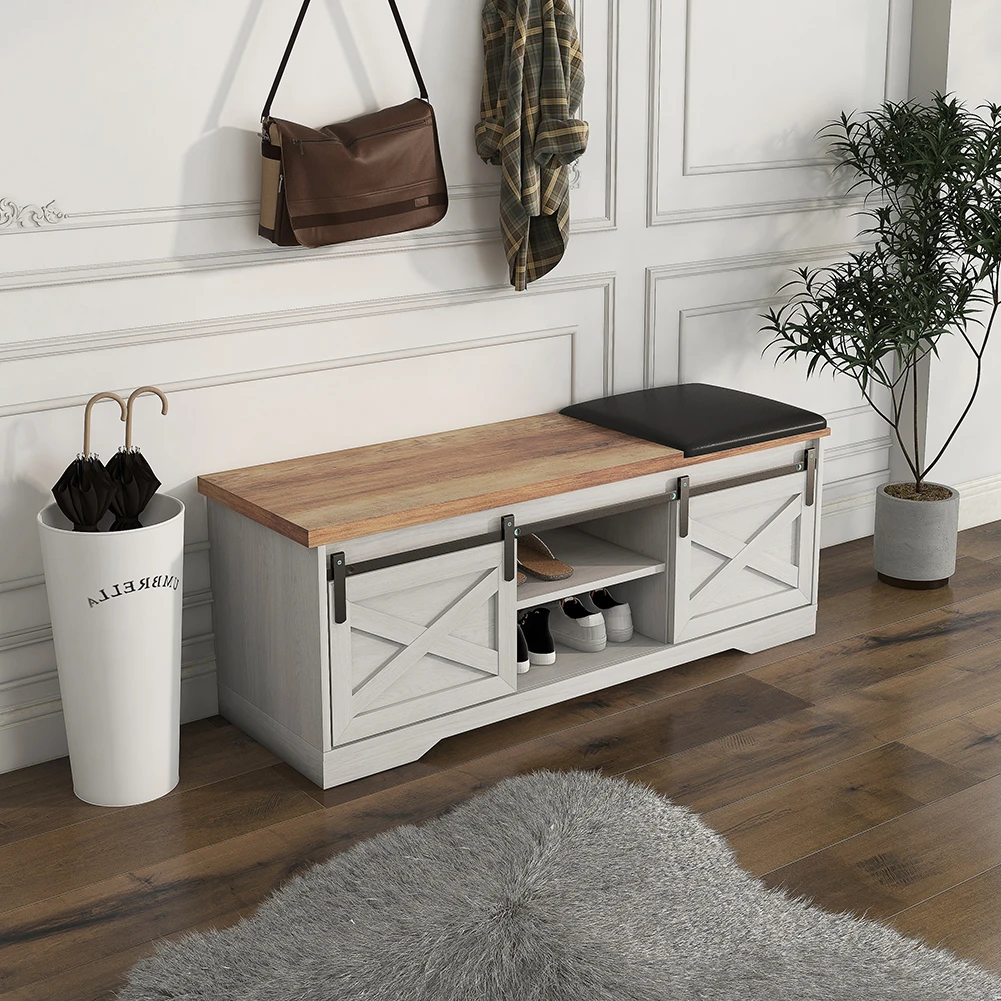
Lighting plays a crucial role in small spaces. Combine ambient lighting with targeted task lighting to eliminate shadows and dark corners. Consider motion-activated options that illuminate the space when you enter with full hands.
Specialized Solutions for Family-Specific Needs
The perfect mudroom organization system addresses your family’s unique requirements. Customizing your approach ensures that the space truly works for everyone who uses it.
Consider these specialized adaptations:
- For families with young children:
- Lower hooks and cubbies that kids can reach independently
- Picture labels for pre-readers
- Step stools for accessing higher storage
Dedicated spaces for school items and sports equipment
For pet owners:
- Hooks specifically for leashes and harnesses
- Washable mat or towel station for muddy paws
- Sealed containers for pet food and treats
Dedicated drawer or bin for pet toys
For active families:
- Specialized hooks for sports equipment
- Ventilated storage for gym bags
- Charging station for electronic devices
- Quick-access storage for frequently used gear
For families with members who have mobility concerns, ensure clear pathways and accessible storage that doesn’t require bending or reaching. Seating becomes particularly important in these situations.
Our mudroom benches with cubbies provide customizable storage options that can be adapted to various family configurations and special needs.
Maintaining Your Organized Small Mudroom
Creating an organized mudroom is only half the battle – maintaining that organization requires ongoing attention and family buy-in. Establishing simple routines prevents backsliding into clutter and chaos.
Implement these maintenance strategies:
- Create a 5-minute daily reset routine for the entire family
- Schedule weekly quick cleanings to wipe down surfaces and reorganize items
- Perform seasonal evaluations to rotate gear and reassess needs
- Establish a one-in-one-out policy for new items
- Use reminder labels until habits become established
Involve everyone who uses the space in both setup and maintenance. When family members help design the organization system, they’re more likely to maintain it. Create age-appropriate responsibilities and recognize consistent efforts.
Remember that even the best systems need occasional refinement. Be willing to adjust your organization approach as your family’s needs evolve or if certain elements aren’t functioning as expected.
With thoughtful planning, creative use of space, and consistent maintenance, even the smallest mudroom can become a highly functional transition space that serves your family well throughout changing seasons and activities.

